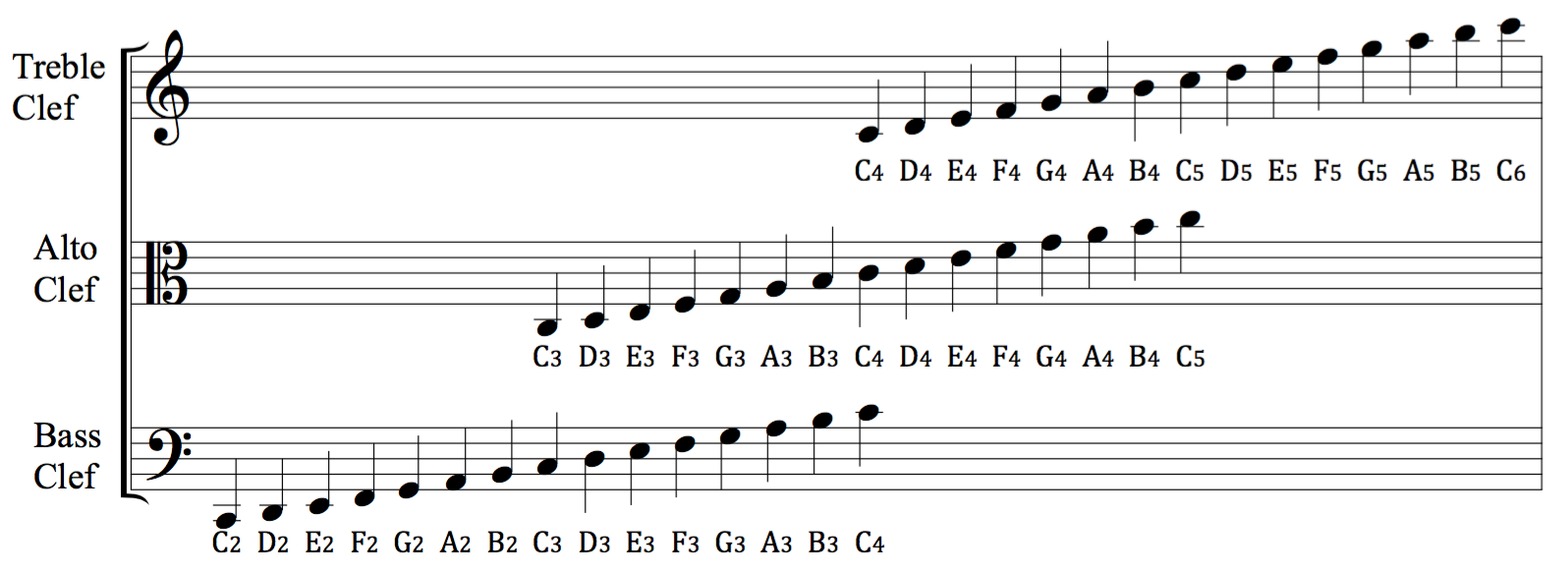|
Contrabassoon
The contrabassoon, also known as the double bassoon, is a larger version of the bassoon, sounding an octave lower. Its technique is similar to its smaller cousin, with a few notable differences. Differences from the bassoon The Reed (mouthpiece), reed is considerably larger than the bassoon's, at in total length (and in width) compared with for most bassoon reeds. The large blades allow ample vibration that produces the low register of the instrument. The contrabassoon reed is similar to an average bassoon's in that scraping the reed affects both the Intonation (music), intonation and response of the instrument. Contrabassoons feature a slightly simplified version of bassoon keywork, though all open toneholes on bassoon have necessarily been replaced with keys and pads due to the physical distances. In the lower Register (music), register, its Fingering (music), fingerings are nearly identical to bassoon. However, the octave mechanism used to play in the middle register wo ... [...More Info...] [...Related Items...] OR: [Wikipedia] [Google] [Baidu] |
Bassoon
The bassoon is a musical instrument in the woodwind family, which plays in the tenor and bass ranges. It is composed of six pieces, and is usually made of wood. It is known for its distinctive tone color, wide range, versatility, and virtuosity. It is a non-transposing instrument and typically its music is written in the bass and tenor clefs, and sometimes in the treble. There are two forms of modern bassoon: the Buffet (or French) and Heckel (or German) systems. It is typically played while sitting using a seat strap, but can be played while standing if the player has a harness to hold the instrument. Sound is produced by rolling both lips over the reed and blowing direct air pressure to cause the reed to vibrate. Its fingering system can be quite complex when compared to those of other instruments. Appearing in its modern form in the 19th century, the bassoon figures prominently in orchestral, concert band, and chamber music literature, and is occasionally heard in pop, rock, a ... [...More Info...] [...Related Items...] OR: [Wikipedia] [Google] [Baidu] |
Contraforte
The ''contraforte'' () is a proprietary instrument with a range similar to the contrabassoon produced by Benedikt Eppelsheim and Guntram Wolf. It is intended to have improved dynamics and intonation over the distinctive but sometimes reticent sound of the conventional contrabassoon. The contraforte uses a different and wider bore than the contrabassoon to produce a distinct tone; the sound is more even in strength and intonation across registers, remaining quite strong into the high register, unlike a contrabassoon. Also, it lacks the distinct "rattle" of a contrabassoon, although an appropriate reed design can replicate this effect where desired. Wolf and Eppelsheim developed an accurate bore taper and precise key works in order to simplify fingerings despite the instrument's large size. In October 2010, Lewis Lipnick, contrabassoonist for the National Symphony Orchestra in Washington, DC, played it in a performance of Beethoven's Symphony No. 9. According to Lipnick, the oth ... [...More Info...] [...Related Items...] OR: [Wikipedia] [Google] [Baidu] |
Double Reed
A double reed is a type of reed used to produce sound in various wind instruments. In contrast with a single reed instrument, where the instrument is played by channeling air against one piece of cane which vibrates against the mouthpiece and creates a sound, a double reed features two pieces of cane vibrating against each other. This means, for instruments with the double reed fully exposed, that the air flow can be controlled by the embouchure from the top, bottom and sides of the reed. The term ''double reeds'' can also refer collectively to the class of instruments which use double reeds. Structure and dimensions The size and shape of the reed depend on the type of double-reed instrument which is of two groups, conical and cylindrical. Even within families of instruments, for example, the oboe family, the reed for the oboe is quite different from that for the cor anglais (English horn). Oboe reeds are usually 7 mm (0.3 in) in width, while bassoon reeds are wider, from ... [...More Info...] [...Related Items...] OR: [Wikipedia] [Google] [Baidu] |
Tenoroon
The tenor bassoon or tenoroon is a member of the bassoon family of double reed woodwind instruments. Similar to the alto bassoon, also called octave bassoon, it is relatively rare. Nomenclature Many debates have been had on the nomenclature of the smaller bassoons. All small bassoons have at one time or another been called fagottino (pl. fagottini), but this term is historically usually only applied to the octave bassoon. The terms quart-bassoon (''Quartfagott'') and quint-bassoon (''Quintfagott'') are applied respectively to the instruments pitched a fourth above and a fifth above the normal bassoon. To add to the confusion, these terms can also be applied to instruments a fifth lower (quint-bassoon in F) and a fourth lower (quart-bassoon in G) known as semi-contrabassoons. Note that the keys of the lower and higher versions are reversed. Often the terms bass and tenor or high are added to clarify which instrument one is talking about, e.g. quart-bass bassoon or high quint-basso ... [...More Info...] [...Related Items...] OR: [Wikipedia] [Google] [Baidu] |
Bass Clef
A clef (from French: 'key') is a musical symbol used to indicate which notes are represented by the lines and spaces on a musical staff. Placing a clef on a staff assigns a particular pitch to one of the five lines or four spaces, which defines the pitches on the remaining lines and spaces. The three clef symbols used in modern music notation are the G-clef, F-clef, and C-clef. Placing these clefs on a line fixes a reference note to that line—an F-clef fixes the F below middle C, a C-clef fixes middle C, and a G-clef fixes the G above middle C. In modern music notation, the G-clef is most frequently seen as treble clef (placing G4 on the second line of the staff), and the F-clef as bass clef (placing F3 on the fourth line). The C-clef is mostly encountered as alto clef (placing middle C on the third line) or tenor clef (middle C on the fourth line). A clef may be placed on a space instead of a line, but this is rare. The use of different clefs makes it possible ... [...More Info...] [...Related Items...] OR: [Wikipedia] [Google] [Baidu] |
Tenor Clef
A clef (from French: 'key') is a Musical notation, musical symbol used to indicate which Musical note, notes are represented by the lines and spaces on a musical staff (music), staff. Placing a clef on a staff assigns a particular pitch to one of the five lines or four spaces, which defines the pitches on the remaining lines and spaces. The three clef symbols used in modern music notation are the #G-clefs, G-clef, #F-clefs, F-clef, and #C-clefs, C-clef. Placing these clefs on a line fixes a reference note to that line—an F-clef fixes the F below middle C, a C-clef fixes middle C, and a G-clef fixes the G above middle C. In modern music notation, the G-clef is most frequently seen as treble clef (placing Scientific pitch notation, G4 on the second line of the staff), and the F-clef as bass clef (placing F3 on the fourth line). The C-clef is mostly encountered as alto clef (placing middle C on the third line) or tenor clef (middle C on the fourth line). A clef may be plac ... [...More Info...] [...Related Items...] OR: [Wikipedia] [Google] [Baidu] |
Sub-bass
Sub-bass sounds are the deep, low-register pitches below approximately 70 Hz (C2 in scientific pitch notation) and extending downward to include the lowest frequency humans can hear, approximately 20 Hz (E0). In this range, human hearing is less sensitive, so these notes tend to be felt more than heard. The low E-string on a bass guitar is usually tuned to 41.2 Hz, while the lowest note on a standard piano is A at 27.5 Hz. Sound reinforcement systems and PA systems often use one or more subwoofer loudspeakers to amplify sounds in the sub-bass range. Sounds below sub-bass are infrasound. Hearing and usage 20 Hz is considered the normal low-frequency limit of human hearing. When pure sine waves are reproduced under ideal conditions and at very high decibels, a human listener will be able to identify tones as low as 12 Hz (G–1). Audio tracks known as bass tests use sub-bass frequencies which are used to test or to demonstrate the capabilities of a ... [...More Info...] [...Related Items...] OR: [Wikipedia] [Google] [Baidu] |
San Francisco Symphony
The San Francisco Symphony, founded in 1911, is an American orchestra based in San Francisco, California. Since 1980 the orchestra has been resident at the Louise M. Davies Symphony Hall in the city's Hayes Valley, San Francisco, Hayes Valley neighborhood. The San Francisco Symphony Youth Orchestra (founded in 1981) and the San Francisco Symphony Chorus (1972) are part of the organization. Michael Tilson Thomas became the orchestra's music director in 1995, and concluded his tenure in 2020 when Esa-Pekka Salonen took over the position. Among the orchestra's awards and honors are an Emmy Award and 15 Grammy Awards in the past 26 years. History The early years In 1909 the Musical Association (MA) was founded by a group of San Francisco citizens with the goal of establishing a professional symphony orchestra in San Francisco. Among the founding board members of the MA was composer, lawyer, and opera librettist Joseph Redding. Redding played an instrumental role in steering the M ... [...More Info...] [...Related Items...] OR: [Wikipedia] [Google] [Baidu] |
Treble Clef
A clef (from French: 'key') is a musical symbol used to indicate which notes are represented by the lines and spaces on a musical staff. Placing a clef on a staff assigns a particular pitch to one of the five lines or four spaces, which defines the pitches on the remaining lines and spaces. The three clef symbols used in modern music notation are the G-clef, F-clef, and C-clef. Placing these clefs on a line fixes a reference note to that line—an F-clef fixes the F below middle C, a C-clef fixes middle C, and a G-clef fixes the G above middle C. In modern music notation, the G-clef is most frequently seen as treble clef (placing G4 on the second line of the staff), and the F-clef as bass clef (placing F3 on the fourth line). The C-clef is mostly encountered as alto clef (placing middle C on the third line) or tenor clef (middle C on the fourth line). A clef may be placed on a space instead of a line, but this is rare. The use of different clefs makes it possible ... [...More Info...] [...Related Items...] OR: [Wikipedia] [Google] [Baidu] |
Kalevi Aho
Kalevi Ensio Aho (born 9 March 1949) is a Finnish composer. Early years Aho began his interest in music at the age of ten, when he discovered a mandolin in his home and began to teach himself how to play it. He soon was taken under the tutelage of Martti Loikkanen, the boy's 4th grade teacher and founder of a local youth mandolin ensemble in Forssa. After learning how to read sheet music, Aho immediately started composing. Aho progressed so fast on the instrument that Loikkanen suggested he study the violin as well, with Loikkanen giving him private lessons. Aho also began to learn violin at an incredible speed, with him later recalling, "Martti taught me at home for free until I started skipping him out of my playing skills and he suggested changing teachers." Aho's parents were quite supportive of his musical hobby, encouraging him to compose and giving him a piano at the age of 15. Career He moved from the city of Forssa to Helsinki in September 1968 to study at the Sibeli ... [...More Info...] [...Related Items...] OR: [Wikipedia] [Google] [Baidu] |

